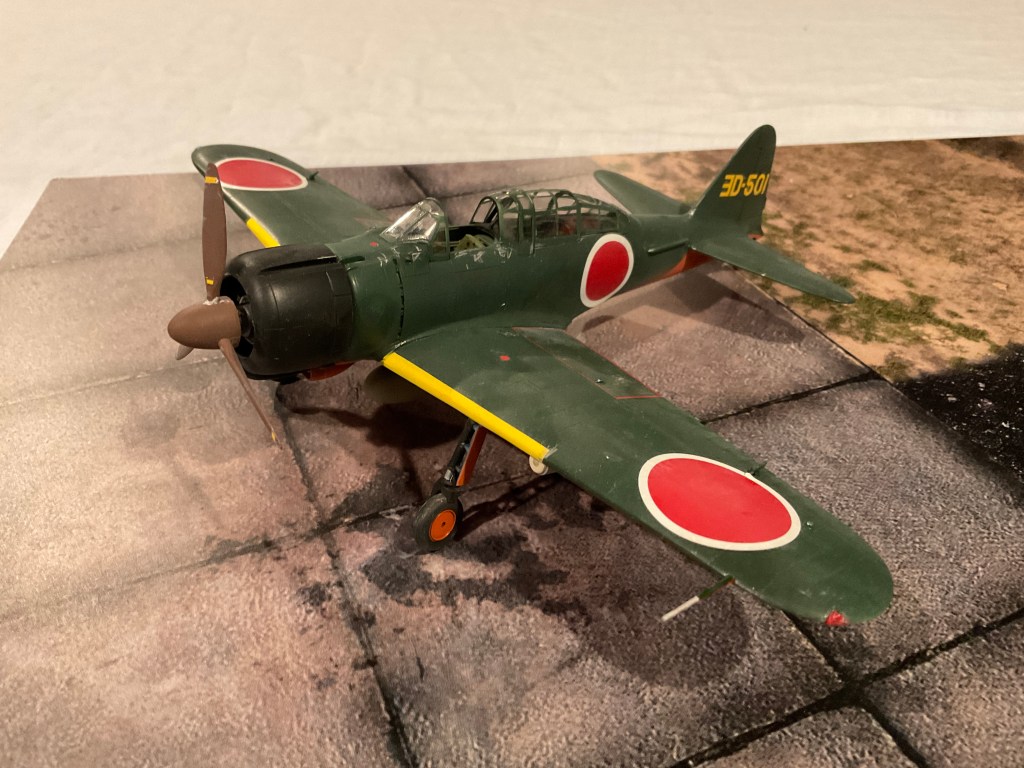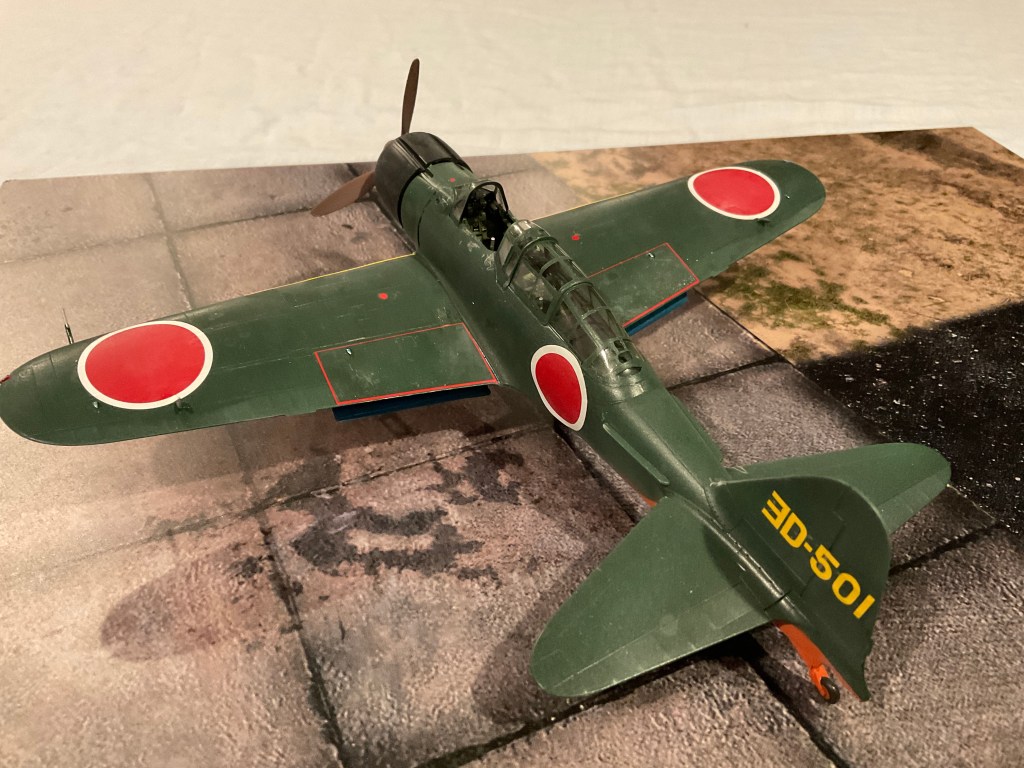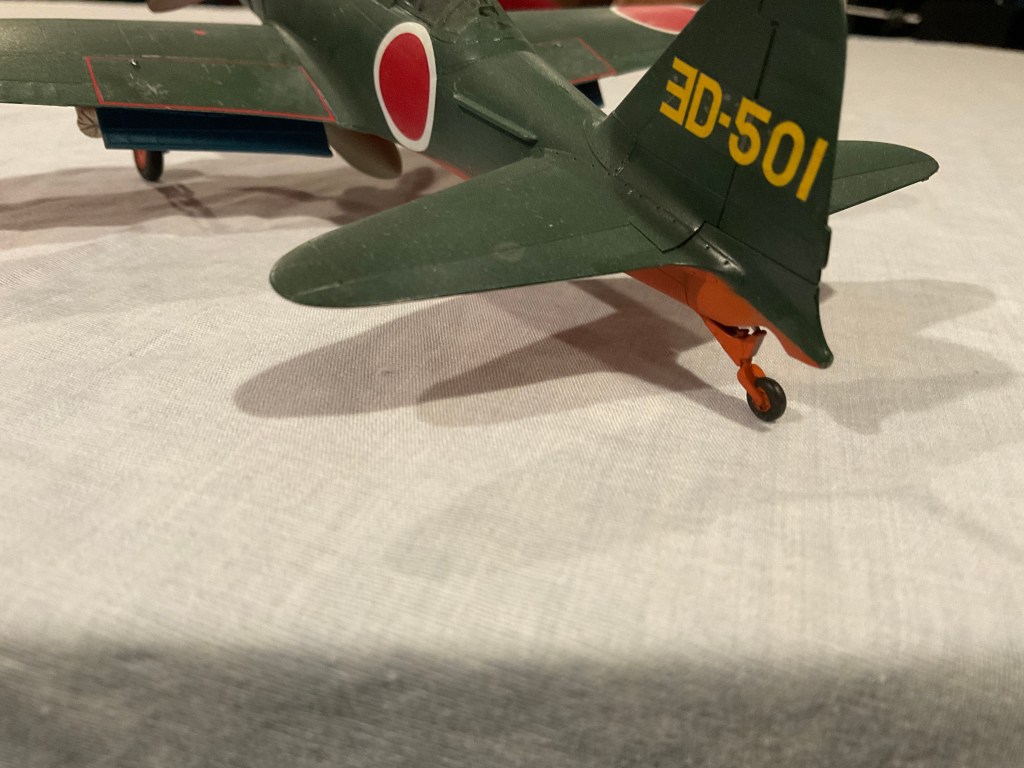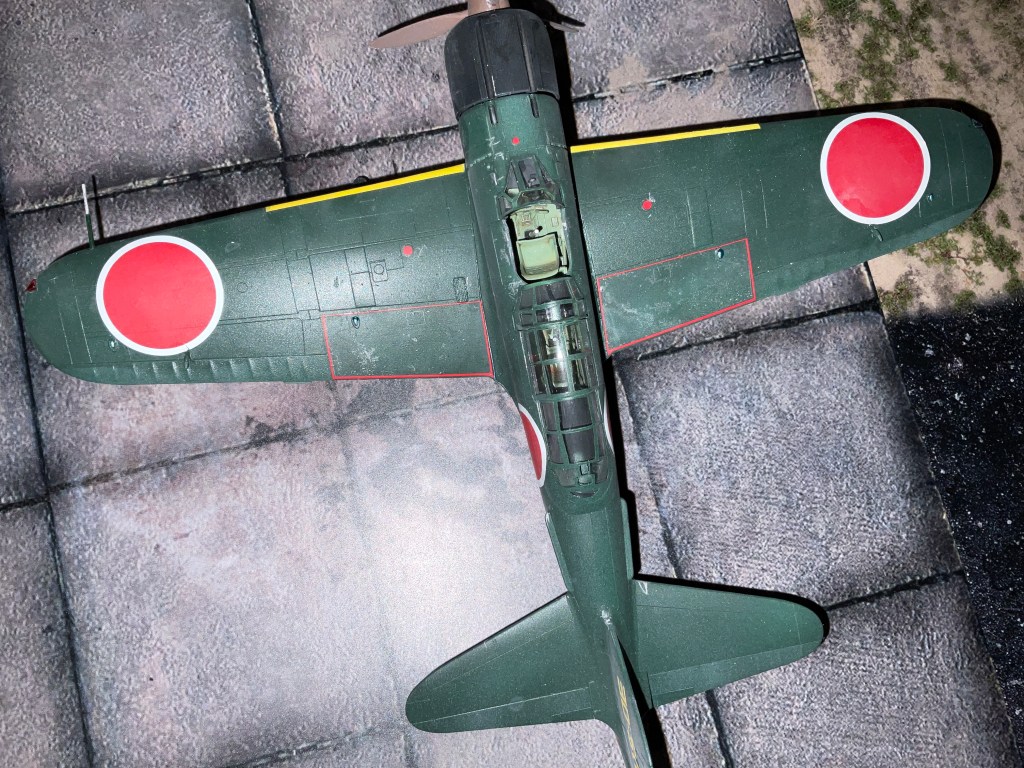This twist on the Zero hadn’t initially been planned for, but there proved to be a big need to fill.

Let’s take a look at a 2-seat Zero.
The Zero was such a revolution in performance, that Japanese Navy quickly decided they wanted some 2-seat conversion trainers so pilots could first handle the powerful and slippery new aircraft with an experienced pilot in the back seat.

The conversion was fairly simple structurally, the most obvious change being the lengthened canopy area with a new seat installed slightly forward and an instructor’s seat slightly aft of the original configuration. The student’s seat forward was completely not covered, while the instructor could close his up. Other changes involved narrow stabilization fins on the rear fuselage, the 20 mm cannon in the wings were removed and the main landing gear covers were mostly removed. One other small tweak involved sturdier tail gear with a pneumatic tire. This all resulted in a 2-place Zero that was only slightly heavier than a single seater. Ideal for pilots switching from something older and more docile.


Most sources I have don’t go into very many specific details, most books only have a single picture with a caption. Normal treatment for a trainer! The old Squadron “in Action” title for the Zero says 273 A6M2-K were converted from A6M2 airframes. But this same book says all were converted from early A6M2 Model 11 Fighter airframes. This seems tidy since the trainer was tagged the A6M2-K Model 11 Trainer. The problem is, only about 30 Model 11 fighters were built. The kit instructions say (I believe correctly) the conversions were all done from A6M2 Model 21 Fighters. Not as tidy, but more plausible.

This particular aircraft was based in Japan in 1945. Many of these aircraft were expended as Kamikaze that year, but I see no indication if this particular aircraft served purely as a trainer or met a more violent end. Normal Japanese painting practice involved over-all orange for training aircraft. But by 1945 even training aircraft often received camouflage, so the paint here reveals nothing to me.


This is the Hasegawa kit. That is Hasegawa’s excellent Zero kit, with a wholly new tooled fuselage and cockpit parts. Very nice. But the wing is adapted by modeler’s surgery; cutting, filling and sanding to move around an air intake and frame the landing gear. Not a hard thing, but funny for the kit to be both a sophisticated and crude conversion all at once.



Another very informative post about a Japanese plane that I had very little knowledge of.
I think that puts you in good company! I could find very little in writing about it.
Pingback: Theme Build 6 – Complete | Plane Dave